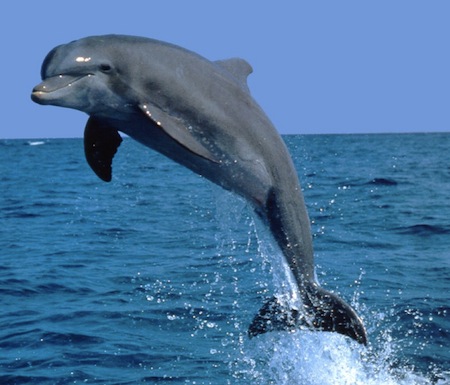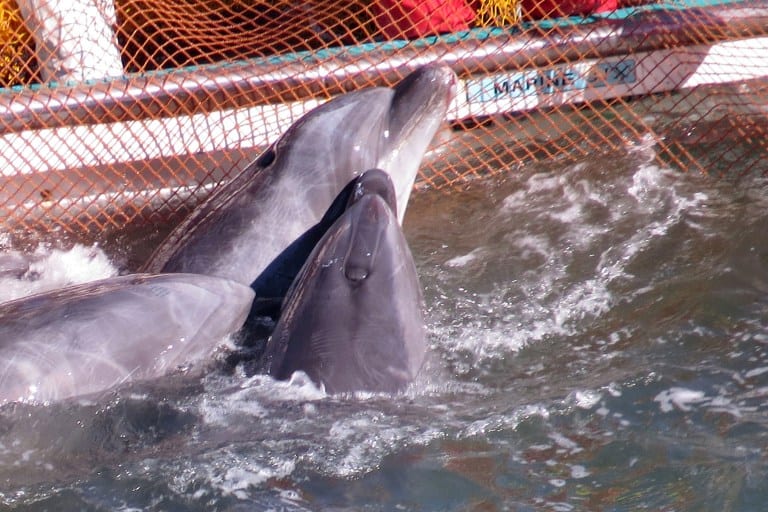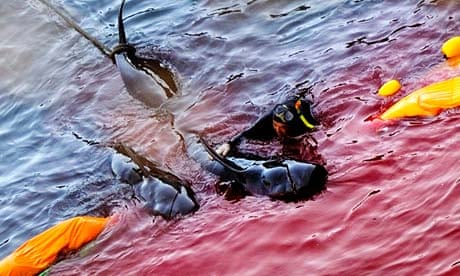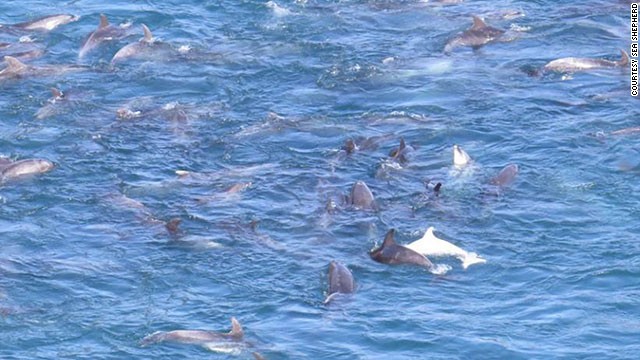Hello everyone. The ICR (Institution for Cetacean Research) has announced that the Japanese whaling fleet has returned to port. This season, the whalers hunted and killed 333 minke whales since December. What this amounts to is that many of the 333 whales were illegally slaughtered in the Southern Ocean Whale Sanctuary and Australian Whale Sanctuary. I can tell you this thanks to the ICR announcing the coordinates where each whale was killed. Sadly of those killed, 200 are being reported as pregnant females. For those of you who may not follow this blog regularly, or this is your first time here....
Back in 2014, the International Court of Justice declared that Japan's lethal scientific whale research program was not scientific, but rather commercial whaling. There is a moratorium currently in effect on commercial whaling, a moratorium in which Japan was found to be violating year after year. The moratorium has a loophole in that nations are able to kill whales for scientific research and sell the meat of the whale rather than waste it. Japan took advantage of that for years, claiming that it was too difficult to do non-lethal research. In order to resume whaling, Japan would need to develop a new program that would actually have scientific merit. Last year, Japan sent a few whaling ships down to the Southern Ocean and performed non lethal research. In late 2015, Japan announced that it would once again be whaling in the Southern Ocean under a new program that was also shot down by the IWC. So by whaling this year, Japan broke international law as they currently have a court ruling against them and at the same time, once again broke the moratorium on commercial whaling.
While the number of whales killed this year is significantly smaller than the quotas that have been set up in the past, illegal is illegal. It's great that Japan has scaled back the number of whales it's hunting, but that is not enough because their program has no scientific merit and is classified as commercial, which remains illegal. In years past the Sea Shepherd Conservation Society locked horns with the whaling fleet in the Southern Ocean, but due to several of their vessels undergoing repairs, the lateness in which Japan announced it would be whaling, and the massive increase in the whaling fleet's target areas, Sea Shepherd was unable to pursue the whalers this year. Despite that Sea Shepherd is battling the ICR in courts around the world and claim to have a high speed ship that would be able to track down the whaling fleet set to set sail next season.
So how long will Japan spit in the face of the world in regards to whaling? Well probably until somebody actually does something about it. Probably until Australia or New Zealand actually escort the whaling fleet out of the whale sanctuaries. Another scenario that could bring an end to the large scale whale hunts would be the lone factory ship needing to be replaced. As an older vessel, the Nisshin Maru's life can only be so long and replacing it would be a huge cost that the Japanese Government may see as a waste as the popularity of whale meat continues to drop.
The bottom line here is that Japan has once again defied international law and until they are not allowed to do so they will do it year after year.
Fighting for sharks, whales, dolphins, and manta rays. Extinction is forever... We cannot allow it...
Friday, March 25, 2016
Sunday, March 20, 2016
Taiji Ends It Brutal Slaughter for the Year
Greetings once again everyone. So I'm not going to lie, I kind of missed the boat a bit on this one due to life events, but the Taiji Dolphin Slaughter came to an end at the start of this month. While hunting permits remain in effect until the end of March, it seems like Taiji has called it quits for the season. So with that being said, the following, according to Ric O'Barry's Dolphin Project are the statistics for the 2015-2016 drive hunt...
Killed: 652
Striped Dolphins: 290
Risso's Dolphins: 245
Bottlenose Dolphins: 66
Pilot Whales: 51
Released: 121
Bottlenose Dolphins: 80
Pilot Whales: 22
Risso's Dolphins: 19
The next numbers are the number of dolphins that were captured for aquariums and marine parks. Keep in mind as always. The main reason this slaughter continues is because marine parks continue to purchase dolphins from Taiji. One live dolphin sold into captivity can go for well over $500,000 dollars. If that doesn't spell profit, I don't know what does. More on that in a minute. First though, the numbers...
Captivity: 111
Bottlenose Dolphins: 98
Risso's Dolphins: 8
Pacific White Sided Dolphins: 4
Pilot Whales: 1
As you can see the vast majority of the dolphins brought into captivity are these guys, the famous bottlenose dolphin.






Killed: 652
Striped Dolphins: 290
Risso's Dolphins: 245
Bottlenose Dolphins: 66
Pilot Whales: 51
Released: 121
Bottlenose Dolphins: 80
Pilot Whales: 22
Risso's Dolphins: 19
The next numbers are the number of dolphins that were captured for aquariums and marine parks. Keep in mind as always. The main reason this slaughter continues is because marine parks continue to purchase dolphins from Taiji. One live dolphin sold into captivity can go for well over $500,000 dollars. If that doesn't spell profit, I don't know what does. More on that in a minute. First though, the numbers...
Captivity: 111
Bottlenose Dolphins: 98
Risso's Dolphins: 8
Pacific White Sided Dolphins: 4
Pilot Whales: 1
As you can see the vast majority of the dolphins brought into captivity are these guys, the famous bottlenose dolphin.

Strangely enough, the bottlenose dolphin is also the most popular species of dolphin in marine parks. So until September 1st, the killing has stopped. The dolphins of Japan can feel a bit safer swimming by until then.
Some things to remember about this slaughter is just how barbaric it is. The best way to do that is by seeing it, so I warn you that the following images are going to be quite graphic. Before that though I can't help but wonder what the future of this slaughter is going to be. The number of dolphins that are released every year seems to be on the rise as the kill numbers drop. On top of that I need to wonder what if anything Sea World will do. They've come out and pledged to help put an end to commercial whaling and dolphins are in fact small cetaceans. So we will see what comes of that. Thanks for reading this quick little blog! I apologize for not posting this sooner! From now until September, there will probably not be too much in the way of dolphin related blogs unless of course something were to happen that is noteworthy. Stay tuned though as I have started working on a blog that will introduce a new topic to this blog, Iceland's Whaling Program. For now though, I leave you now with a very real reminder of the horror that is the Taiji Dolphin Slaughter.





Saturday, March 19, 2016
Reaction to Sea World Ending Orca Breeding Program
Hello everyone. By now chances are the you've heard the big announcement that the marine park, Sea World has officially ended it's captive Orca breeding program. For those of you who are unaware... Sea World has been under massive pressure from animal activists and many members of the general population to end the captive breeding of orcas. Before I reveal my thoughts on this matter as I tend to stay away from this sort of thing normally, let's take a look back.
Back in 2013, a film was released entitled "Blackfish". The film focused on the story of Tilikum, an orca currently residing in Sea World Orlando. The film focused on the risks of keeping these animals in captivity as Tilikum has been called responsible for the deaths of 3 people (depending on who you ask of course). The film in general however is one sided against Sea World and captivity in general. I'm not going to go into it much more than that here. If you really want to know my whole reaction to the film, check out this blog I did a couple years back. To check that out Click here!
Pressure mounted on Sea World over what has become known as the Blackfish Effect. Stocks crashed, attendance sank, and it seemed like Sea World's world was crashing down around them. Suddenly though Sea World started to change it's tune. They first announced new enclosures for the orcas that would be much larger and more natural feeling and looking. The first of those is set to be ready for 2017 in San Diego with the other Sea World parks to follow suite. Despite this announcement things continued to be rough for Sea World as the orca shows continued to be a target of much displeasure. So Sea World again changed it's attitude and agreed to put an end to it's traditional orca entertainment show. They will be replacing the old show with a new show that will focus more on education and these animals in the wild versus entertainment. Then Sea World shook up the entire zoo/aquarium/marine park world when the announced just days ago that they will be ending their orca breeding program making the orcas currently housed at Sea World the last generation of orcas to be housed at Sea World.
This announcement has gotten all kinds of responses. Some people applaud Sea World's choice. Some see it as giving into a small group of people. Some see it as the start of the end of the entire zoo/aquarium world. Me? I see it is a very interesting situation. I stand by what I said years ago that I do not think orcas, or any other large cetaceans for that matter belong in captivity. I feel like they are simply too big and way too smart and even way too social to be kept in a tank. At the same time though, I see where Sea World comes from. Take a moment to think of the history of the orca. Many years ago these animals we knew nothing about. People literally feared these beings. They got the name "killer" whale after all. Then Sea World starts a show of entertainment. Suddenly these animals become beloved. Suddenly people cared about the orca. Suddenly people were no longer afraid. Things would largely go Sea World's way until Blackfish came out. After a few years of fighting the company decided, for one reason or another Sea World has decided to call it quits with the orca. I see it as that the orca has fulfilled it's purpose in captivity. With the sheer fame and attraction to these animals, I think it is safe to say that future generations will not be fearing these animals and will hold them in the same regard as they do now.
Personally I don't see it as Sea World slapping the zoo/aquarium world in the face like some do. I see this as a step towards actually caring about the animals in the wild more than just having them for entertainment. Yes, Sea World gave money to research and orca conservation, but guess what they will continue to do so and probably spend more money than ever before on it. In fact, Sea World claims that it will put 50 million dollars towards marine animal rescue, conservation. Personally for me the most important fight Sea World claims it is going to step up in is the fight to end all commercial whaling, commercial seal killing, as well as shark finning worldwide. I don't know about you, but to me all that stuff does not sound like a facility turning it's back on the zoo/aquarium world. To me it sounds like Sea World is in a transition from entertainment to education which is really what all of these facilities should be about. Whether or not these claims become true, time will tell, but for now it certainly sounds like a big step in the right direction.
The end of the orca breeding program no doubt ushers in a new era for Sea World. Sure, extreme animal activists will probably jump on Sea World for another thing (dolphin breeding) and that will be another battle for Sea World to fight. Some people that stood by Sea World have turned their backs to them for abandoning the shows and breeding program, but those are the people who are in it to be entertained and not in it to try and fully understand these animals that we as a species still cannot grasp. Many people who were against Sea World's shows and programs have applauded them for this choice.
As I said before... I do not believe there is a need for orcas to be in captivity. Regardless as to what side of the fence you may have been on before this announcement. Whether it was pro Blackfish or pro Sea World, one thing everybody should agree on. That is that the survival of the species in the wild is what matters. It does not matter that a day will come where we can't see them doing flips for our amusement. All that matters is that Sea World starts a real serious educational program while the animals are still there and continues that program long after the last orca at Sea World is gone. I've said it before in several blogs, if Sea World were to ever take a stand against places like Taiji, the world would change. Sea World took a stand for whatever reason, be it financial or otherwise, to see an end to what is their biggest entertainment attraction. Times could be changing, but only time will tell that. For now though I thank Sea World for their choice and truly hope that the 50 million plus really does go partly towards seeing an end to the commercial slaughters plaguing our oceans.
Back in 2013, a film was released entitled "Blackfish". The film focused on the story of Tilikum, an orca currently residing in Sea World Orlando. The film focused on the risks of keeping these animals in captivity as Tilikum has been called responsible for the deaths of 3 people (depending on who you ask of course). The film in general however is one sided against Sea World and captivity in general. I'm not going to go into it much more than that here. If you really want to know my whole reaction to the film, check out this blog I did a couple years back. To check that out Click here!
Pressure mounted on Sea World over what has become known as the Blackfish Effect. Stocks crashed, attendance sank, and it seemed like Sea World's world was crashing down around them. Suddenly though Sea World started to change it's tune. They first announced new enclosures for the orcas that would be much larger and more natural feeling and looking. The first of those is set to be ready for 2017 in San Diego with the other Sea World parks to follow suite. Despite this announcement things continued to be rough for Sea World as the orca shows continued to be a target of much displeasure. So Sea World again changed it's attitude and agreed to put an end to it's traditional orca entertainment show. They will be replacing the old show with a new show that will focus more on education and these animals in the wild versus entertainment. Then Sea World shook up the entire zoo/aquarium/marine park world when the announced just days ago that they will be ending their orca breeding program making the orcas currently housed at Sea World the last generation of orcas to be housed at Sea World.
This announcement has gotten all kinds of responses. Some people applaud Sea World's choice. Some see it as giving into a small group of people. Some see it as the start of the end of the entire zoo/aquarium world. Me? I see it is a very interesting situation. I stand by what I said years ago that I do not think orcas, or any other large cetaceans for that matter belong in captivity. I feel like they are simply too big and way too smart and even way too social to be kept in a tank. At the same time though, I see where Sea World comes from. Take a moment to think of the history of the orca. Many years ago these animals we knew nothing about. People literally feared these beings. They got the name "killer" whale after all. Then Sea World starts a show of entertainment. Suddenly these animals become beloved. Suddenly people cared about the orca. Suddenly people were no longer afraid. Things would largely go Sea World's way until Blackfish came out. After a few years of fighting the company decided, for one reason or another Sea World has decided to call it quits with the orca. I see it as that the orca has fulfilled it's purpose in captivity. With the sheer fame and attraction to these animals, I think it is safe to say that future generations will not be fearing these animals and will hold them in the same regard as they do now.
Personally I don't see it as Sea World slapping the zoo/aquarium world in the face like some do. I see this as a step towards actually caring about the animals in the wild more than just having them for entertainment. Yes, Sea World gave money to research and orca conservation, but guess what they will continue to do so and probably spend more money than ever before on it. In fact, Sea World claims that it will put 50 million dollars towards marine animal rescue, conservation. Personally for me the most important fight Sea World claims it is going to step up in is the fight to end all commercial whaling, commercial seal killing, as well as shark finning worldwide. I don't know about you, but to me all that stuff does not sound like a facility turning it's back on the zoo/aquarium world. To me it sounds like Sea World is in a transition from entertainment to education which is really what all of these facilities should be about. Whether or not these claims become true, time will tell, but for now it certainly sounds like a big step in the right direction.
The end of the orca breeding program no doubt ushers in a new era for Sea World. Sure, extreme animal activists will probably jump on Sea World for another thing (dolphin breeding) and that will be another battle for Sea World to fight. Some people that stood by Sea World have turned their backs to them for abandoning the shows and breeding program, but those are the people who are in it to be entertained and not in it to try and fully understand these animals that we as a species still cannot grasp. Many people who were against Sea World's shows and programs have applauded them for this choice.
As I said before... I do not believe there is a need for orcas to be in captivity. Regardless as to what side of the fence you may have been on before this announcement. Whether it was pro Blackfish or pro Sea World, one thing everybody should agree on. That is that the survival of the species in the wild is what matters. It does not matter that a day will come where we can't see them doing flips for our amusement. All that matters is that Sea World starts a real serious educational program while the animals are still there and continues that program long after the last orca at Sea World is gone. I've said it before in several blogs, if Sea World were to ever take a stand against places like Taiji, the world would change. Sea World took a stand for whatever reason, be it financial or otherwise, to see an end to what is their biggest entertainment attraction. Times could be changing, but only time will tell that. For now though I thank Sea World for their choice and truly hope that the 50 million plus really does go partly towards seeing an end to the commercial slaughters plaguing our oceans.
Subscribe to:
Posts (Atom)